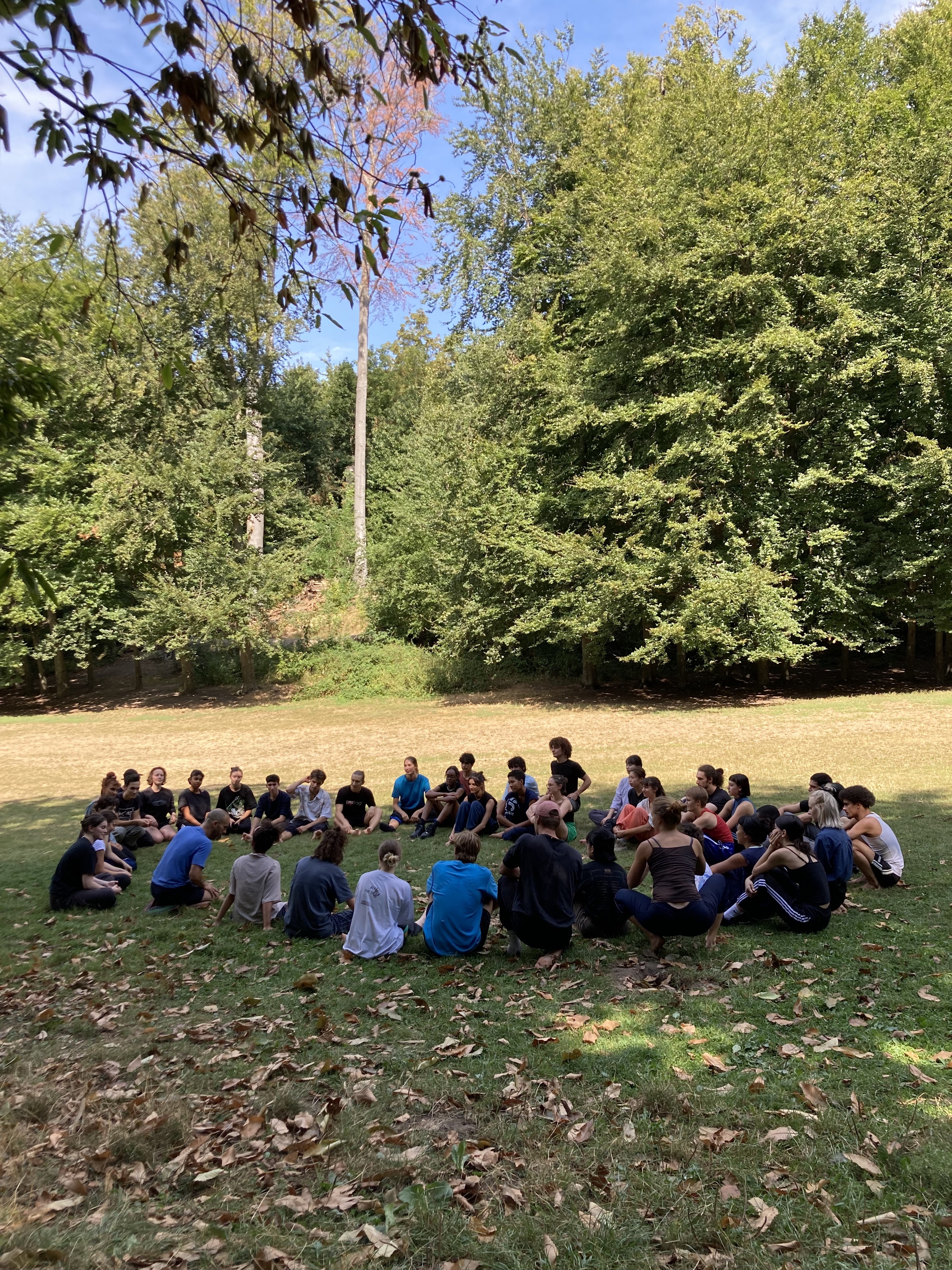P.A.R.T.S. opens its Bachelor Training program every three years. A new cycle started in September 2025. On these pages, you can find more information about the program. The audition campaign for the 2028–2031 cycle will be launched in the autumn of 2027. Subscribe to our newsletter or follow us on social media to stay informed.

INTRO
The Bachelor programme 'Training' aims to help the student gain insight in the technical foundations mostly rooted in Western traditions and ideas of contemporary dance which actively includes other voices and approaches. Specific to the P.A.R.T.S. approach is the combination of ballet and release technique, a focus on physical awareness, theatre and musical abilities, creative development and theoretical reflection.
The BA Training Cycle is aimed at students aged between 18 and 25, who want to become a professional dancer and/or choreographer. The school aims to strengthen and enrich their dance skills in the broadest sense, to expose them to professional working practice under the guidance of experienced artists and teachers, and to support and nurture their creative voices. Key considerations are to teach and encourage students to think, to research, and to communicate; and to develop an open mind and a caring attitude.
The Training Cycle does not offer separate sub-programs for dancers and choreographers. Both ‘technical information’ and ‘conceptual content’ (if one can make such general distinctions) are important for future dancers and choreographers alike, and it is up to the student, with the school’s help, to work out an individual pathway that is tailor-made to reflect both their current needs and their longer-term goals.
A BA Training cycle graduate can go on to be either a dancer, a choreographer or a dance maker. They may end up in a company, in a temporary project, or working alone. They may be in permanent employment, or be a nomadic freelancer. But whatever path they decide to take, they will need a clear personal profile, based on professional knowledge and skills, as well as on the choices that they make from a wealth of opportunities.
For a very large part of the program, all students follow the same trajectory (often different teachers work in parallel groups on the same topics). At the end of the 2nd year and in the 3rd year, some periods offer divergent parallel options, allowing students to choose what suits their interests and development best.
Since all teachers at P.A.R.T.S. are guest teachers, their teaching takes place in blocks of 2-8 weeks, 4 or 5 sessions per week.
HOW MUCH DOES THE TRAINING PROGRAM 2025-2028 COST?
Students pay a single registration fee and an annual tuition fee.
- The registration fee is € 6.000. This amount is due only once, irrespective of the number of years the student spends at P.A.R.T.S. It has to be paid before the start of the courses.
- The tuition fee for the Training cycle is € 3.000 per year.
For the full 3 years of the Bachelor program Training 2025-2028, the cost will be € 6.000 + (3 x € 3.000) = € 15.000
P.A.R.T.S. provides a limited number of scholarships to students who lack sufficient financial resources and have not been able to secure scholarships from other funding bodies. The application process for a P.A.R.T.S. scholarship begins after the final audition. Applicants are required to provide detailed financial information, and scholarships are awarded based on the student’s financial need and the available budget.
P.A.R.T.S. relies on external funding sources for scholarships, so nothing can be guaranteed.
P.A.R.T.S. will only award scholarships to students who can demonstrate that they have made serious efforts to secure funding elsewhere. Start looking for grants offered by local authorities (municipal, regional, national) or private foundations as soon as you register for a pre-selection. In many cases, the application deadlines may have passed before you receive final confirmation of your acceptance at P.A.R.T.S.
If you need documents from us, please contact our P.A.R.T.S. staff member Jonas Gineika.
STUDY GUIDE
The study guide for the cycle 2025-2028 is available here.

